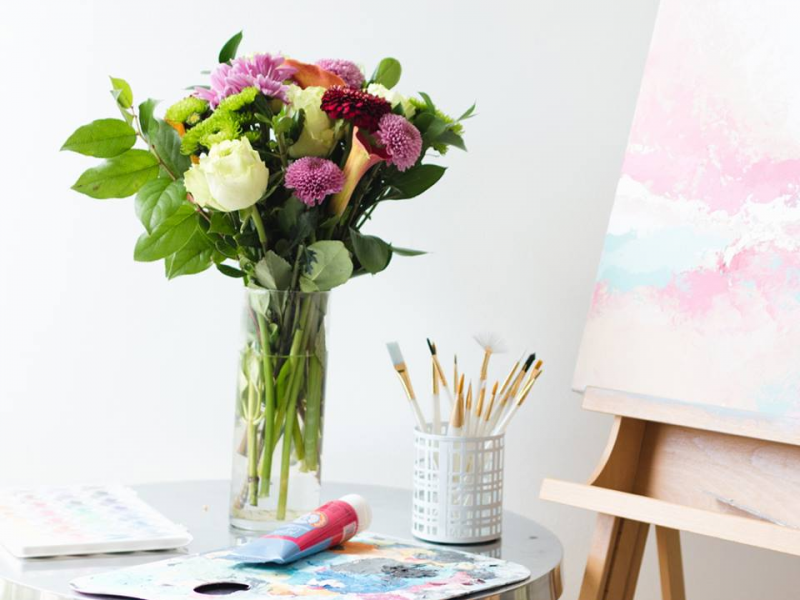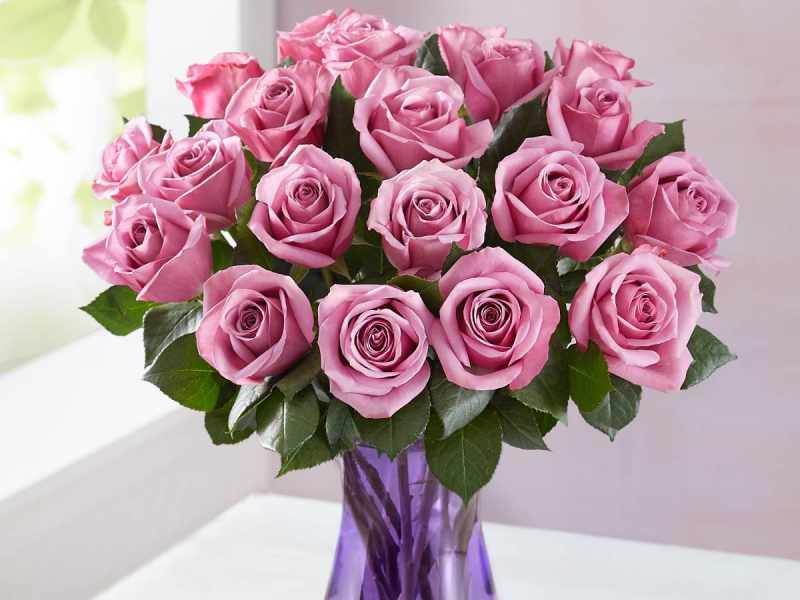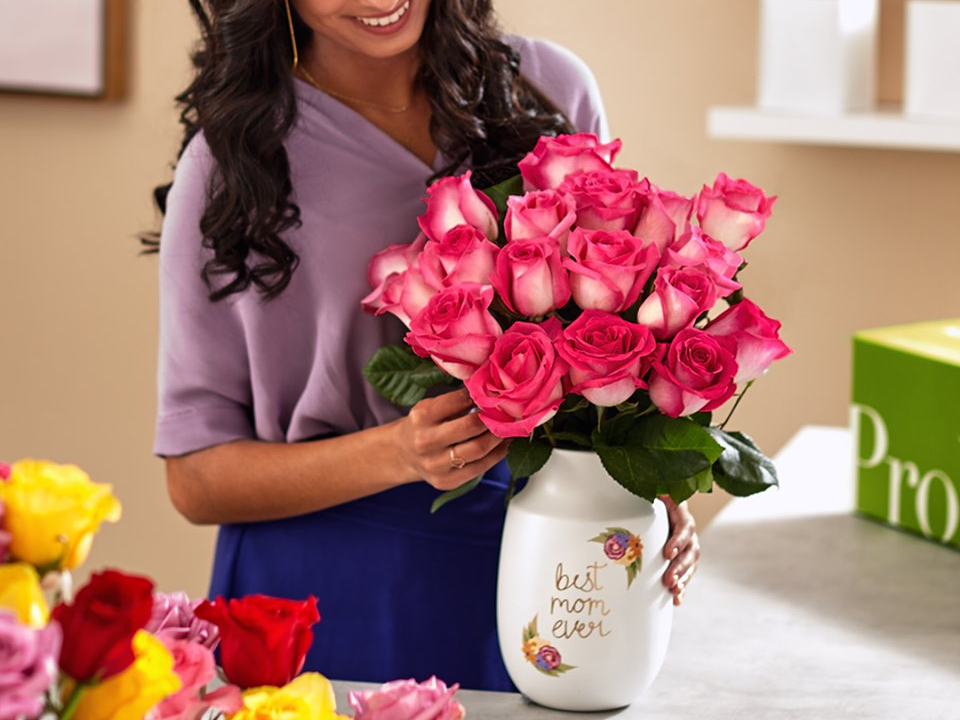- Most cut flowers can last anywhere from 7-12 days if properly cared for, but there are easy ways and simple tricks to make your bouquets last longer with common household items.
- Here are the best methods to keep your flowers alive longer.
- Read more: The best flower delivery services
Everybody loves fresh flowers. They bring color and life to your space, add a nice touch to any room, and make the perfect gift for someone special or even yourself.
One of the pitfalls is the short lifespan of fresh-cut flowers, but there are lots of tricks, and tips that extend their longevity, including ones from my mom and experts at UrbanStems and ProFlowers.
The first thing to keep in mind that some flowers naturally last longer than others. Roses, lilies, freesia, daisies, and sunflowers tend to stay fresh longer than hyacinths, lilacs, daffodils, ranunculus, and tulips. These are notorious for wilting after only a few days.
We did the research and spoke with experts at UrbanStems and ProFlowers for all the ways to make your buds last longer.
Everything you need to keep flowers alive longer:
You don't need everything on this list, but you'll definitely need gardening shears or scissors to cut stems, and a vase for the bouquet.
- Garden shears: Fiskars Steel Bypass Pruning Shears
- Kitchen scissors: Tigeo Multi-Purpose Scissors
- A low vase: Mifley Ceramic Vase
- A can of soda: 12-pack of Sprite
- Asprin: Equate Aspirin 500-count
- Bleach: Clorox Bleach
- Apple cider vinegar: Bragg Organic Apple Cider Vinegar
How to keep flowers alive longer:
Prepare your flowers for the vase

Experts at Urban Stems and ProFlowers suggest following these five flower care tips:
- Cut the stems: Before you put those roses in water, trim 1-2 inches off the end of each steam. Garden shears are best for this task, but kitchen scissors or a sharp, clean knife will also do. Cut at an angle to help the stems take in water more easily since they aren't resting flat against the bottom of the vase. Experts suggest retrimming your blooms every few days for a fresh and clean stem.
- Prune extra leaves: It's important to remove any leaves that fall below the water line to prevent bacterial growth. Check your flowers daily to remove dead leaves and petals. This is especially important in mixed bouquets which have multiple types of flowers that may have different blooming times.
- Pick the right vase: This may seem obvious to some people, but it really does make a difference. Just because the florist hands you a bunch of peonies on long stems doesn't mean they should be put in a tall vase. Bigger, heavier blooms should be cut short and put in a low vase where they can support each other when they open or have room to spread out, while lighter, more delicate flowers can be kept in a taller vase. Make sure you are not crowding the vase either; when in doubt you can always make two bouquets out of one.
- Change the water every few days: Start with a clean vase and fill it with room temperature water. When you add ingredients like flower food to the water, make sure they are completely mixed and dissolved before you place the flowers. Change the water, clean the vase, and re-trim the stems every few days.
- Avoid heat, direct sunlight, windows, and even fruit: Flowers will last longer in a cooler room and if you keep them out of direct sunlight. Avoid placing them near appliances that generate high or low temperatures like the stove, air conditioner, ceiling fans, and even your computer or TV. Open windows will also cause them to dehydrate more quickly, and keep them away from fresh fruit which releases tiny amounts of gas that can cut the lifespan of your blossoms.
Make your flowers last longer with additives

- Flower food packet: The pre-mixed packet that comes with flowers from your florist or grocery store is universally agreed by experts to be the best overall method for keeping flowers alive. It's the perfect mix of the three essential things flowers need: carbohydrates (sugars), biocides (cleansing agents), and acidifiers. These ingredients promote cell metabolism, combat bacteria, and adjust the pH of the water to increase water uptake. Experts recommend adding a new packet to your vase whenever you change the water, so ask for several from your florist if you can. If you run out of packets, try this recipe for homemade flower food: 1 teaspoon sugar, 1 teaspoon bleach, and 2 teaspoons lemon or lime juice mixed into 1 quart of water.
- Vodka: Happy hour for your flowers is officially a real thing. By adding a few drops of vodka to your water, you're slowing the wilting process through the alcohol's ability to decrease the production of ethylene, the ripening gas that makes fruits, veggies, and plants mature.
- Soda: Maybe you didn't know your hydrangeas had a sweet tooth? Mix a ¼ cup of soda into the water and watch how your blooms stay perky with a sugary beverage, just like a kid with a can of Sprite. In fact, that's the type of soda recommended, since a dark drink like Coke or Pepsi will turn the water cloudy.
- Aspirin: Keep your daisies from drooping by crushing an aspirin tablet and mixing it into your water. The common pain-reliever can lower the pH level in the water, which helps it travel through the stem faster to keep your flowers fresher, longer.
- Coins: The copper in coins, especially pennies, has acidic properties that also fight bacteria growing in your water and on your flowers. Just one penny on the bottom of the vase will help your tulips open up, but some experts suggest adding crushed aspirin to lower pH levels and increase water flow.
- Apple cider vinegar, sugar, and bleach: The jury's still out on this one (sorry, Mom), but the idea here is that you're mimicking the flower food with sugar for nutrients and vinegar to acidify the water. The most common recipe calls for 2 tablespoons of sugar, 2 tablespoons of apple cider vinegar and ½ teaspoon bleach for a quart vase. And if this method doesn't work for your flowers, there are lots of other things you can do with a little ACV.
- Bleach: If bleach fights bacteria on floors and countertops, it only makes sense that it will kill the nasties in your vase water too. This method may be the trickiest since too much bleach is bad for your blossoms. Experts suggest just a ¼ teaspoon of bleach for 1 liter of water and adding a bit of soda or vinegar for an acidic element that will help the water flow through your flowers.
- Refrigerator: There's a reason why your florist usually keeps flowers in a large commercial fridge. This method will keep your buds fresher for longer - if you remember to do it every night.
Check out our guide to the best flower delivery services

The best online flower delivery services
Now that you know how to keep fresh-cut flowers alive as long as possible, you're ready to order some blooms. We've done a lot of testing to choose the best online flower delivery services.
